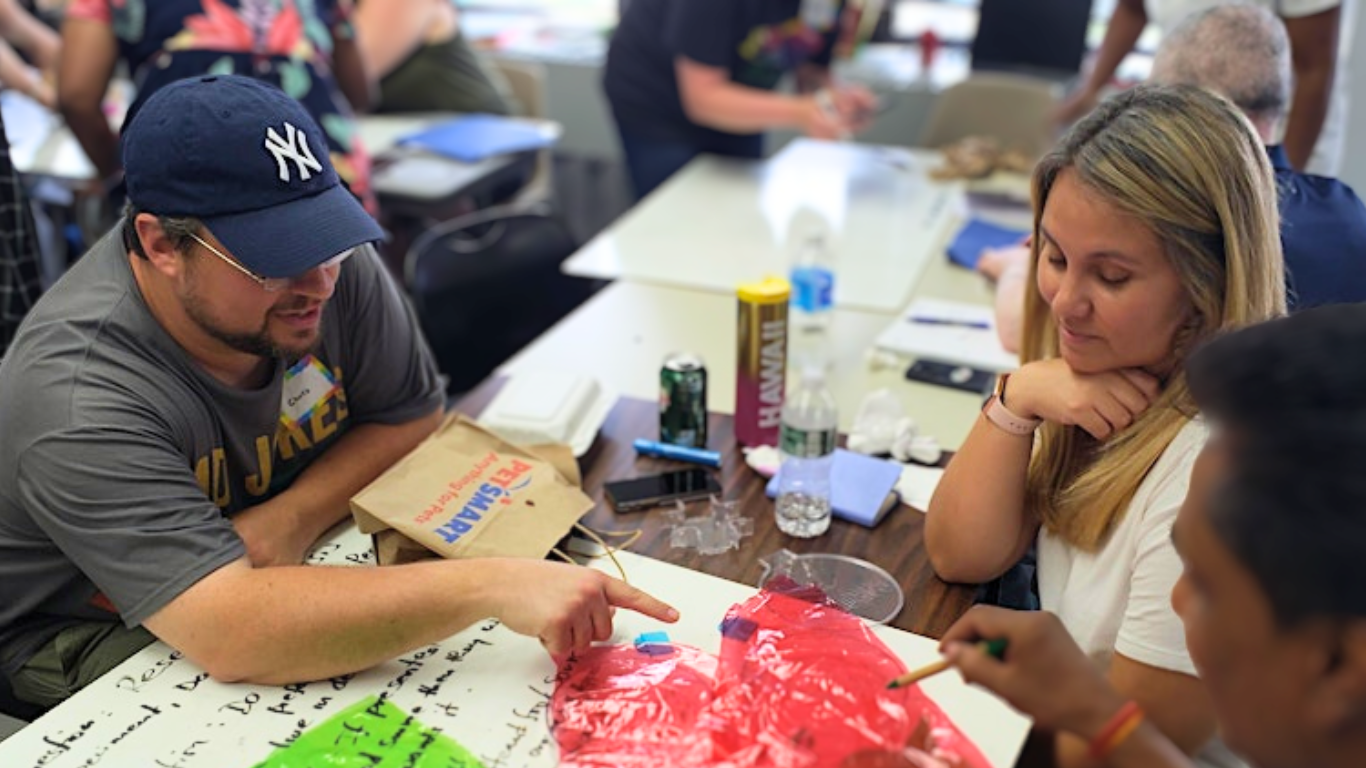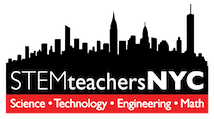
Life Sciences is rich with interconnected models that tell the story of interactions and scale. With shifts in NGSS and NYS Regents standards, there’s a push toward a concept-based approach. We’re here to help you make that shift! This summer, we hosted a sold-out, one-week workshop focused on the new Life Science Regents Labs, and it was a huge success! Building on that momentum, Chris Resch and a team of expert educators are offering in-person lab workshops and virtual planning sessions throughout the 2024-2025 school year.
If you missed a session check out our “Life Science New Regents” summaries. – Click links blow to reveiw sessions!
Session 1 Sept. 3rd, 2024 / Launch
Summary:Each lab combines hands-on experimentation, genetic modeling, and data analysis to promote inquiry-based learning aligned with NGSS standards.
NGSS
The Next Generation Science Standards (NGSS) were developed in response to the findings of the Nation’s Report Card in the early 2000s, which highlighted gaps in students’ science knowledge. The NGSS initiative was driven by organizations such as the National Science Teachers Association and the American Academy for the Advancement of Science, with input from various states, including early adopters like New Jersey.
Unlike traditional, rigid curricula, NGSS is not just about memorizing facts—it’s about inspiring students to think like scientists. It seeks to empower students with the knowledge and skills they need to navigate an increasingly complex world, allowing them to apply scientific principles not only in future careers but in everyday life. NGSS focuses on creating scientifically literate, curious learners, igniting their passion for discovery through a revolutionary approach called three-dimensional learning.
This method integrates:
Disciplinary Core Ideas (DCIs) – the essential knowledge students need to grasp, whether they’re studying biology, chemistry, or physics.
Science and Engineering Practices (SEPs) – critical skills like asking questions, gathering data, and designing creative solutions.
Crosscutting Concepts (CCCs) – universal themes, such as energy or the relationship between structure and function, that transcend the boundaries of specific subjects.
One of the most inspiring aspects of NGSS is its use of real-world phenomena—things we see and experience every day—to ignite students’ curiosity. These phenomena become the heart of the lesson, helping students build a deeper, more personal connection to the scientific concepts they’re learning, revisiting them throughout a unit in a way that feels meaningful and alive.
NGSS also embraces the idea that learning should evolve and deepen over time, with students returning to key concepts at different stages in their education, each time with more depth and complexity. This approach, often described as “blocks, not bows,” reflects a commitment to building a strong, lasting foundation of knowledge.
Finally, NGSS champions the integration of science with math and literacy, recognizing that these skills are intertwined in the real world. By fostering critical thinking across subjects, NGSS prepares students not just to pass tests, but to solve real-world problems, inspiring them to become innovators, thinkers, and change-makers in their communities and beyond.
NGSS is more than a set of standards—it’s a movement that puts students at the center, encouraging them to explore, question, and imagine, ultimately preparing them to thrive in a world that needs their ingenuity more than ever.
Labs-
The Balancing Act
In this lab, students first examine passages related to blood glucose levels and the sensation of cold hands. They then design an experiment using ice buckets and thermometers, where they measure temperature differences after placing their hands in the ice. The experiment requires them to outline independent and dependent variables, and establish constraints. A key aspect of this lab is that students are responsible for designing the entire experiment themselves. The main goal is for students to design the experiment independently, identifying independent and dependent variables, and interpreting their findings in relation to bodily functions like blood glucose levels and temperature regulation.
For the Birds
This lab explores genetics and natural selection through bird populations, analyzing genetic data to understand evolutionary processes. Students work with models and simulations to track changes in allele frequencies over generations. The lab focuses on how environmental pressures, such as food availability, affect bird populations over time.
Mystery of Lactose Intolerance
This lab investigates lactose tolerance and involves multiple components:
Part 1: Students first conduct an experiment to demonstrate how lactase breaks down lactose into glucose and galactose. They add lactase (similar to lactase tablets) to one container of milk, leaving another untreated, and use glucose test strips to confirm the breakdown of lactose. This aligns with the HHMI lactose intolerance lab. Students also answer questions related to predictions based on the experiment.
Part 2: In part 2, they shift focus to the genetic aspect of lactose intolerance. After reading about the human LCT gene and its control regions, students model how mutations in control regions affect lactase production. They create two models: one where control regions mismatch (leading to lactose intolerance) and another where the regions match (allowing lactose digestion). This activity helps them draw conclusions about lactose persistence or intolerance based on gene interaction.
Part 3: This focuses on evolutionary components, where students simulate population genetics, tracking how allele frequencies shift based on environmental pressures (whether or not a population relies on milk for survival).
Session 2 Nov 1st 2024
Life Science New Regents Series
Summary:
Sharing Resources: Participants agreed to share resources, like modified slides and ab materials, via email. Teachers were encouraged to exchange contact details to facilitate collaboration outside of official meetings. The group discussed using email lists to share resources and get feedback on lesson plans, questions, or lab modifications outside of scheduled professional development sessions.
The discussion focused on the challenges of teaching complex biology topics under evolving curricula, especially with an emphasis on new skills like evaluating evidence, making claims, and constructing models. Key points include:
Ambiguity in Questions: Some exam questions are intentionally vague, requiring students to use scientific reasoning to arrive at multiple possible answers, like choosing between photosynthesis or cellular respiration. The group noted that this mirrors real-world science, where evidence can be interpreted in different valid ways.
Student Skill Development: There’s a need to teach students how to understand and work with new task verbs like “evaluate” and “make a claim,” as these require higher-level thinking beyond memorization.
Teacher Flexibility: Teachers can give credit for different correct answers if students provide valid reasoning and evidence, but they must ensure students read and understand the provided text to guide their responses.
Curriculum and Support: New Visions curriculum is mandated for many schools, though some have flexibility to supplement it. Other curricula like SAVVAS (Miller and Levine) were mentioned as useful for addressing knowledge gaps, especially when students haven’t learned foundational concepts.
Professional Development: Teachers using New Visions may have ongoing professional development (PD) to stay aligned with the curriculum updates.
Apply Core Concepts: Instead of memorizing details, students need to apply their understanding of core ideas (like cell specialization, energy flow, etc.) to unfamiliar contexts.
Use Scientific and Engineering Practices: Students are expected to demonstrate skills like analyzing data, constructing explanations, developing and using models, and engaging in argument from evidence. This means they’re asked to perform tasks such as interpreting graphs, drawing conclusions from experiments, or explaining processes based on data.
Integrate Cross-Cutting Concepts: They must connect what they’ve learned in science to broader ideas like systems thinking, cause and effect, and stability and change. For example, students might be given a biological system and asked to explain how energy and matter are conserved or transformed within it.
Scenario-Based Questions: Assessments often present new scenarios or case studies, and students have to apply their knowledge and skills to solve problems within those scenarios.
Modifications to Resources: Several teachers discussed modifying resources from platforms like New Visions to fit their students’ needs, time constraints, and classroom behavior. Adjustments are often necessary to accommodate shorter class periods and other limitations.
Time Constraints in Labs: Teachers discussed challenges with conducting certain labs, like the yeast lab, within a 45-minute period. Some modifications include shortening the lab to 20 minutes or giving students homework, though homework packets often get lost.
Session 3 Nov 12th 2024
Reflection: Building Confidence in Transition and Innovation
As educators, we are no strangers to the complexities of change, especially when it involves adapting to new standards and assessments. The transition from the Living Environment Regents to the NGSS-aligned Biology Regents is one such challenge, and today’s session brought to light the resilience, creativity, and camaraderie of this community.
Acknowledging the Transition’s Emotional Toll
The transition timeline sparked important questions and unearthed shared uncertainties. Teachers voiced concerns about preparing students for dual exams and managing the nuances of a phased shift. These moments of vulnerability reminded us that, behind every curriculum shift, there are educators who care deeply about their students’ success. Facilitators’ assurances—and the tangible resources shared—helped build a sense of direction amidst the ambiguity.
The Lab Struggle is Real
When the group dove into discussions about NGSS labs, the collective experience was a mix of frustration and ingenuity. Teachers openly expressed their challenges with unclear instructions and improvised setups. Stories of balancing on chairs and experimenting with different clays to simulate bird collisions were humorous yet deeply relatable. These moments humanized the work, underscoring the lengths educators go to in order to provide meaningful, hands-on experiences for their students.
But it wasn’t just about struggles; it was about collaboration. Teachers didn’t simply vent—they sought solutions. They shared tips, materials lists, and ideas, demonstrating how much stronger we are when we lean on one another. Facilitators’ promises to provide visual guides and step-by-step aids felt like a lifeline, reaffirming the importance of clear, practical support.
Breaking Misconceptions
One of the most poignant moments came when facilitators addressed misconceptions about NGSS modeling. Teachers admitted to feeling boxed in by the idea of “correct” answers, reflecting the pressure we all feel to “get it right.” The facilitators’ reassurance that NGSS celebrates diversity in students’ thinking was a powerful reminder: science isn’t about rigid formulas—it’s about creativity, exploration, and seeing the world through multiple lenses. This realization lifted a collective weight, sparking excitement about the possibilities of student-driven modeling.
Moving Forward with Purpose
The session concluded with a renewed focus on practical needs—sample assessments, pacing guides, and troubleshooting tips for labs. These requests weren’t just about logistics; they were about confidence. Teachers want to feel prepared, supported, and ready to help their students thrive in this new era of science education.
A Community of Shared Purpose
Today was more than a training—it was a testament to the heart of education. The honesty, humor, and determination in the room reminded us all why we do this work. It’s not just about meeting standards or checking boxes; it’s about fostering curiosity, resilience, and growth—in our students and ourselves.
The challenges ahead may be significant, but so is our capacity to meet them. Together, with shared resources, collective wisdom, and a little bit of laughter, we’ll navigate this transition and come out stronger on the other side.
Wisdom from our teachers







New Life Science Regent Labs
Structure and Function: Balancing Act – Exploring Feedback and Homeostasis
Inheritance and Variation of Traits: Unraveling the Mystery of Lactose Intolerance
Interdependent Relationships in Ecosystems: For the Birds – Designing Solutions
Priorities for the New Life Science Regents Labs Series!
Curricular sequencing and placement of the labs.
Cross-unit connections to the bigger ideas and being more intentionally three dimensional.
Claims Evidence Reasoning (CER) model will be woven through all three of the labs.
Focus on pedagogical shifts inherent to NGSS/NYSSLS. Planning for the shift towards science literacy and practices, and away from tons of facts.
Workshops in the series will target launching phenomena, Socratic Dialogue, and narratives, and highlight very concrete lessons that complement the NYS labs.

